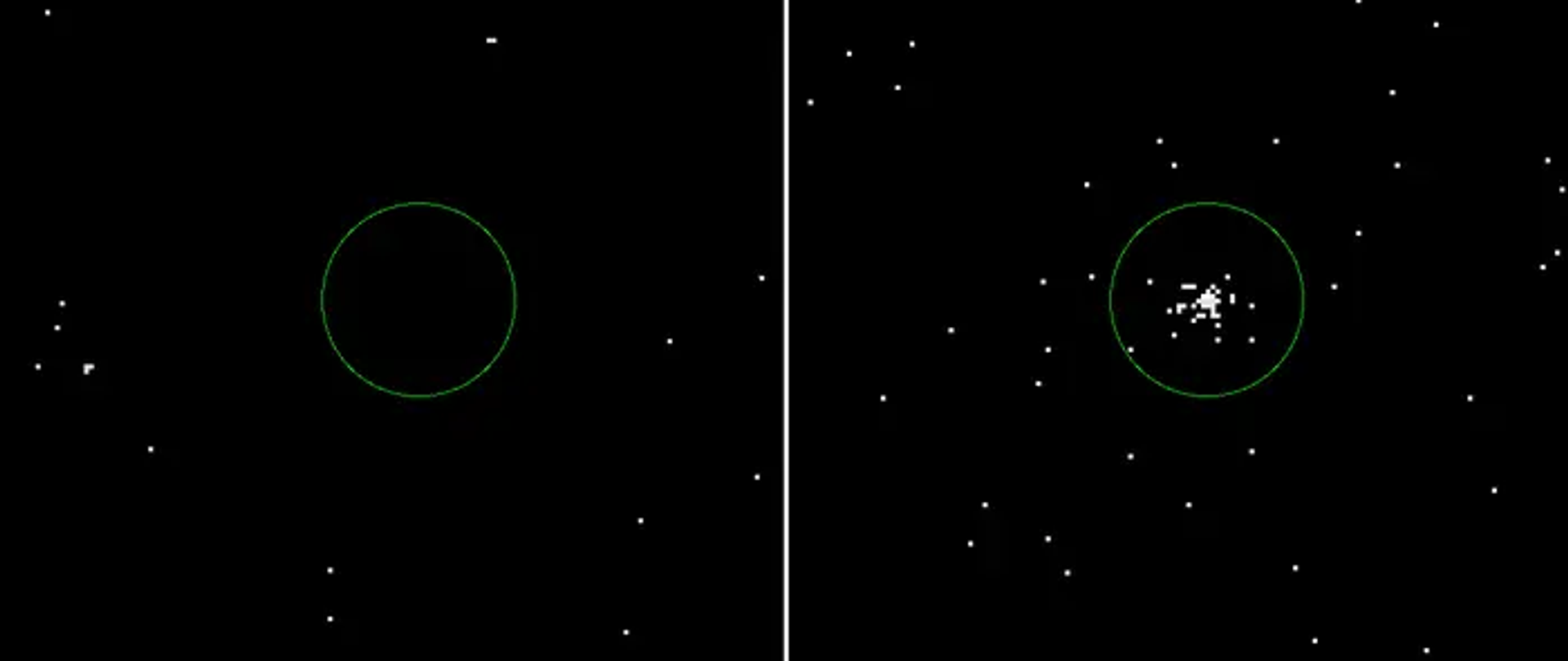Snacktime: Astronomers Spot Black Hole That Takes Bite Out of Star Every Month

CC0 / /
Subscribe
Astronomers have long tracked stars being steadily eaten away by black holes after becoming trapped in their orbit, and they’ve even seen entire stars getting torn apart by them. However, now astronomers have found something new: a star that’s getting eaten by a black hole very slowly, for about one week every month.
This bizarre event is unfolding about 500 million light-years away, where a white dwarf named Swift J0230 has been observed for more than a year suddenly growing extremely bright, then become extremely dim.
A team based at the University of Leicester in the UK first spotted the star in June 2022 using the Neil Gehrels Swift Observatory, a space telescope that monitors ultra-high-wavelength radiation, such as gamma rays, x-rays, and ultraviolet light.
Their results are discussed in a paper published in Nature Astronomy on Thursday.

Now you don’t see it, now you do! X-ray images of the same location on the sky before (left) and after (right) Swift J0230 erupted. These images were taken with the X-ray Telescope on-board the Swift satellite.
Researchers noticed that after being bright for between seven and 10 Earth days, Swift J0230’s brightness would fall by a factor of 20 in a little under 16 hours, becoming almost impossible to spot. Then, about a month later, it would light back up again for another seven-to-10 days.
What they found was that this dramatic brightening happened when Swift J0230 swung close to a black hole designated 2MASX J02301709+2836050, which sits near the center of their host galaxy. When a star does this, it’s called a tidal disruption event. It’s not unknown to science, but they typically happen daily or annually, not on monthlong cycles like in this case.
Rob Eyles-Ferris, a research associate at the University of Leicester, said in a news release that the discovery was “an exciting addition to the class of partially-disrupted stars as it shows us that the two classes of these objects already found are really connected, with our new system giving us the missing link.”
Black holes are among the most powerful and mysterious objects in the universe. They form from the core of massive collapsed stars where the gravity behind the implosion became so strong that not even light could escape from it. However, black holes are nonetheless visible when their gravity begins tearing stars apart or drawing in interstellar gas, which becomes hot and shines as it crunches toward the point-of-no-return.
The largest black holes anchor the centers of galaxies and can emit such powerful radiation they are visible billions of light-years-away. Earth scientists call such black holes “blazars.”


